Our favourite places to stay on this sleepy Cebu island.
13 Spots in Korea & Japan to Recreate Your Fave K-drama & Anime Scenes

South Korea and Japan are both extremely popular destinations for Pinoy travellers, and here’s something to excite you even more — a list of places where you can recreate your favourite K-drama and Japanese anime scenes. Ready ka na bang kiligin ulit?
Must-visit K-drama spots in South Korea
There’s tons of K-drama filming locations in South Korea; so much so that it would take another long article to put them all together. However, we’ve done the research for you and made this summary of the most popular K-drama filming locations every Pinoy fan should visit.
1. Nami Island, Chuncheon, Gangwon Province
Filming location of Winter Sonata (2002)
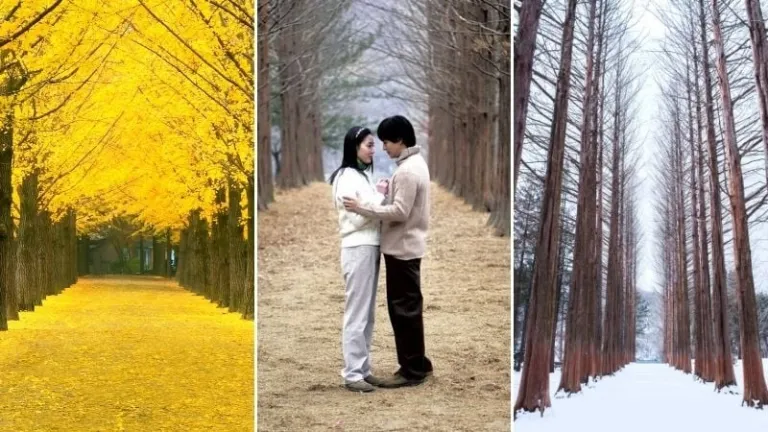 Image credit (L-R): tawatchaiprakobkit via Canva Pro (left and right photos); IMDB
Image credit (L-R): tawatchaiprakobkit via Canva Pro (left and right photos); IMDB
No hardcore K-drama fan should miss Nami Island, the filming location of the Korean romance drama that started it all — Winter Sonata. Strike a pose at the Pine Tree Lane where the couple Kang Jun-sang / Lee Min-hyung (Bae Yong-joon) and Jeong Yoo-jin (Choi Ji-woo) had their first kiss. Then, continue to Metasequoia Lane to see the statues that immortalised the couple’s iconic scene.
It’s best to visit Nami Island during autumn (September to November) when the landscape turns magical in golden yellow. But, if you really want to recreate your own Winter Sonata scene here just like in the drama, try visiting in winter (December to February). Just don’t forget to layer up.
2. Filming location of Goblin (2016)
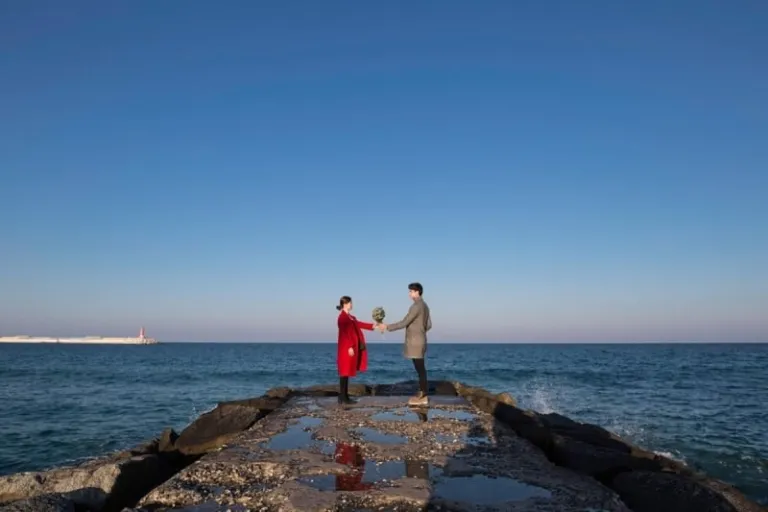 Image credit: Gangwon Province
Image credit: Gangwon Province
Who could ever forget the memorable scene where Kim Shin (Gong Yoo) and Ji Eun-Tak (Kim Go-Eun) first met at Jumunjin Breakwater? Many fans flock here to reenact the scene. If you’re one of them, don’t forget to don a red scarf to make it even more realistic.
Also read: This Pinoy Couple Recreated K-Drama Scenes in South Korea
Jumunjin Breakwater is located in Jumunjin Beach in Gangwon Province, the very same area where the BTS bus stop is also found. Why not hit two birds with one stone by visiting both places while you’re here?
3. Hallasan National Park, Jeju Island
Filming location of Crash Landing on You (2019-2020)
 Image credit (L-R): Netflix; Aleksey Gavrikov via Canva Pro
Image credit (L-R): Netflix; Aleksey Gavrikov via Canva Pro
The Ri-Ri couple crash-landed in the hearts of many Pinoys (ours included!) in 2020. The crash landing scene of Yoon Se-ri (Son Ye-Jin) was actually filmed in Jeju Island’s Hallasan National Park instead of North Korea’s DMZ.
Also read: Filipinos Can Visit Jeju Island & Gangwon Province Visa-Free This June 2022
4. E-World, Dalseo, Daegu
Filming location of Weightlifting Fairy Kim Bok Joo (2016)
 Image credit: Netflix
Image credit: Netflix
In the 12th episode of K-drama Weightlifting Fairy Kim Bok Joo, Kim Bok-joo (Lee Sung-kyung) and Jung Joon-hyung (Nam Joo-hyuk) went on a date with friends at E-World where they held hands for the first time. The kilig scenes in this amusement park will have you giggling, laughing, and crying all at once.
And since you’re already here, go up E-World 83 Tower to get a panoramic view of Daegu City.
5. N Seoul Tower, Seoul
Filming location of My Love From The Star (2013)
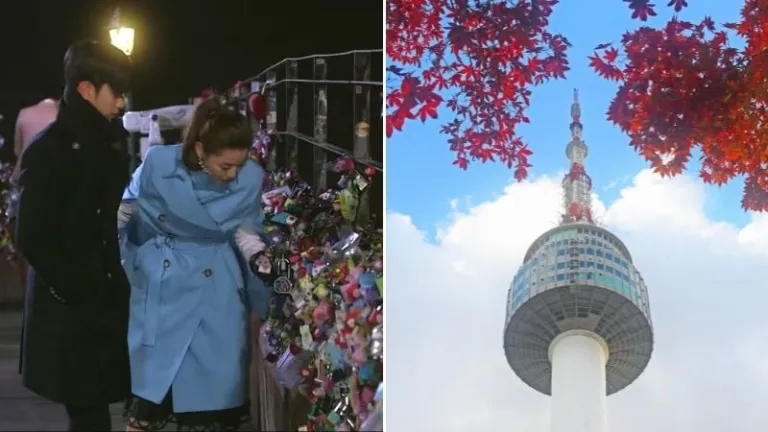 Image credit (L-R): Netflix; the.epic.man via Canva Pro
Image credit (L-R): Netflix; the.epic.man via Canva Pro
N Seoul Tower has been featured in many K-dramas, but the romantic scene on My Love From The Star is probably one of the most unforgettable. The top star character Cheon Song-yi (Jun Ji-hyun) took Do Min-joon (Kim Soo-hyun) to the top of N Seoul Tower to lock their love on a padlock. Don’t you wish to do the same with your sweetheart?
Also read: Things to Do in Seoul: Para sa Mga Kinain-na-ng-Kdrama
Located on Namsan Mountain, N Seoul Tower is the first general radio wave tower in South Korea, broadcasting signals for KBS, SBS, and MBC.
6. Sogeumsan Suspension Bridge, Wonju, Gangwon Province
Filming location of It’s Okay to Not Be Okay (2020)
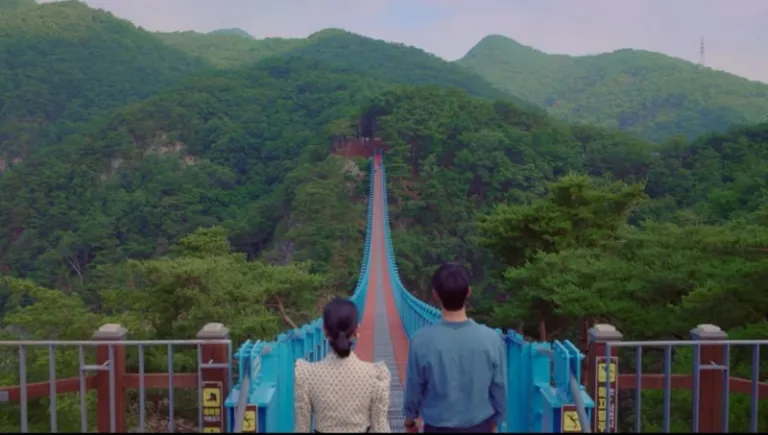 Image credit: Netflix
Image credit: Netflix
On episode 9 of It’s Okay to Not Be Okay, Moon-young (Seo Ye-ji) and Gang-tae (Kim Soo-Hyun) went on a day trip where they crossed Sogeumsan Suspension Bridge in Wonju, Gangwon Province. In this cinematic scene, Moon-young asked Gang-tae to give her a piggyback ride because she’s scared, but ended up crossing the bridge on her own anyway.
Who won’t be afraid of crossing a bridge that’s 100m high and 200m long? It’s South Korea’s longest and largest pedestrian bridge, after all! Let’s see if you can recreate the scene without trembling.
7. Sabang Memorial Park, Pohang, North Gyeongsang Province
Filming location of Hometown Cha-Cha-Cha (2021)
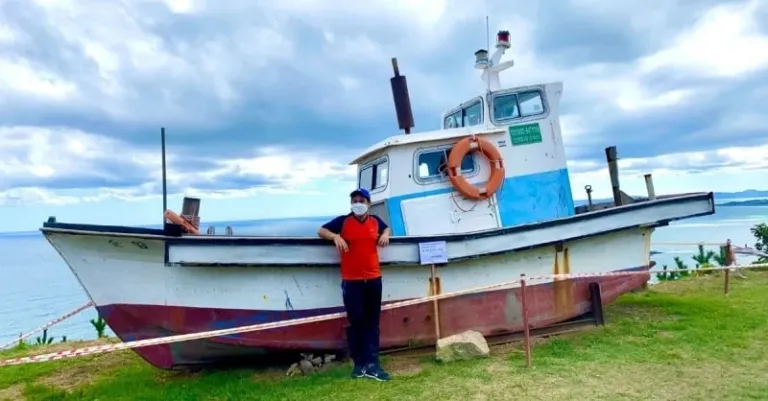 Image credit: Dan Arinzana
Image credit: Dan Arinzana
This Filipino went all the way to Pohang, a city in North Gyeongsang Province, to visit Hometown Cha-Cha-Cha’s filming locations. A notable site is the Sabang Memorial Park where a boat sits on top of a hill. This is where Yoon Hye-jin (Shin Min-a) and Hong Du-sik (Kim Seon-ho) met many times and took their pre-wedding photos. We can’t help but turn green with so much envy for this lovely couple.
Pohang is a three-hour bus ride from Busan. So, if Busan is part of your Korea itinerary, why not side trip to Pohang to visit Hometown Cha-Cha-Cha’s filming locations? Who knows, you might bump into the Chief Hong of your life!
Inspired to visit all these filming locations in South Korea? Check out ShopBack’s Travel Thursdays campaign to save and get your money back for your Korea accommodations on Agoda, Booking.com, and Hotels.com, as well as tours and activities on Trip.com, Klook, and KKday.
Must-visit anime places in Japan
Aside from K-drama, Pinoys are also addicted to Japanese anime. In fact, we’ve learned a number of Japanese words and phrases by binge-watching some anime series. If you are an otaku, here’s a list of anime places in Japan you should definitely visit soon.
8. For Studio Ghibli films (1986)
 Image credit: nakashi
Image credit: nakashi
While waiting for the Studio Ghibli Theme Park to open soon, Ghibli fans can visit the Ghibli Museum in Inokashira Park in Mitaka, Tokyo first. Here, you can spend a magical day filled with inspiration from the award-winning Studio Ghibli animated films such as My Neighbour Totoro, Princess Mononoke, and Spirited Away, to name a few.
Inside, you can discover interesting anime exhibits, watch special film showings, and enjoy the playful installations and colourful structures. The museum was designed by Hayao Miyazaki himself, the creative genius behind all these enchanting characters loved by millions of fans all over the world.
9. Shinjuku, Tokyo
For Kimi No Na Wa (2016) and Godzilla (1954)
 Image credit: Antonio Tajuelo
Image credit: Antonio Tajuelo
Shinjuku is a special ward in Tokyo known for its bustling entertainment, shopping, and business centres. Several scenes from the famed anime film Kimi No Na Wa were inspired by the cityscapes of Shinjuku. In fact, this Filipino visited the real-life locations of Kimi No Na Wa, which were mostly found in Shinjuku.
Do watch out for Godzilla atop the Toho Cinemas building as you stroll around Shinjuku as in the one pictured above.
10. The Gundam Base Tokyo
For Gundam series (1979)
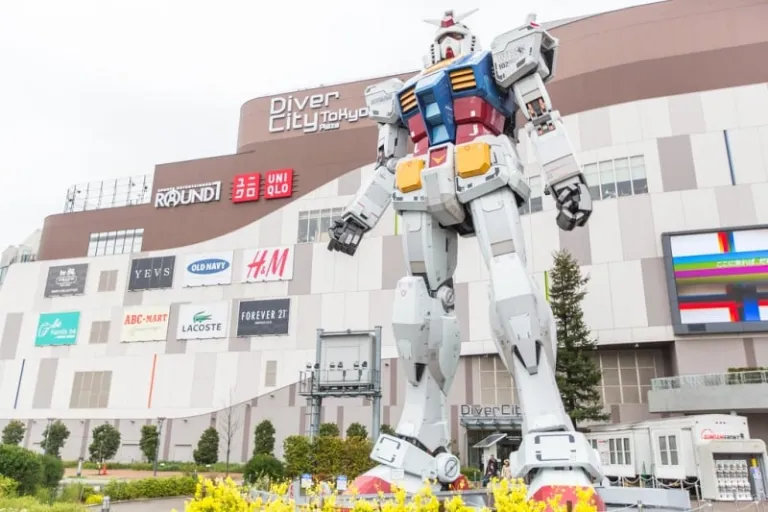 Image credit: IQRemix
Image credit: IQRemix
You are living under a rock if you haven’t heard about Gundam. First released in 1979, Gundam is one of the oldest and most popular anime series of all time. Gundam fans should definitely visit The Gundam Base Tokyo in Diver City Tokyo Plaza.
Snap a photo of the life-sized Gundam statue, and shop for your favourite Gunpla (Gundam plastic model kits). They even have older Gunpla models from the 1980s and 1990s. You can also observe and learn how the model kits are assembled here.
11. Pokémon Center MEGA TOKYO
For Pokemon (1997)
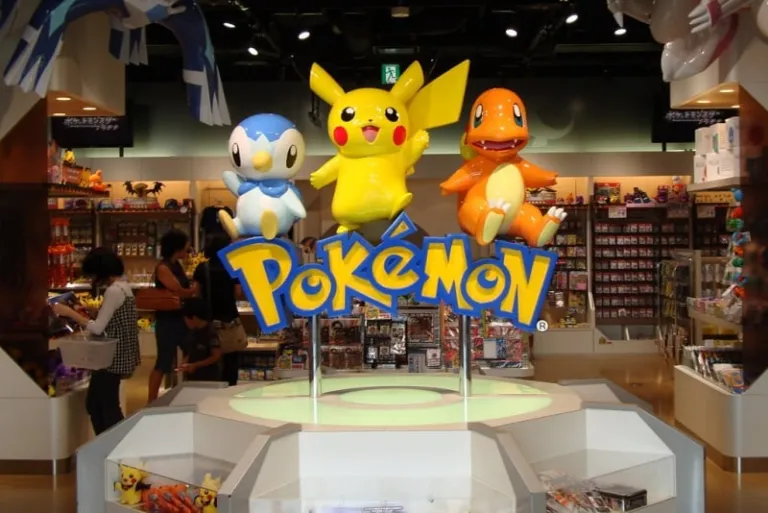 Image credit: alisdair
Image credit: alisdair
Who doesn’t love Pokemon? Since its release in 1997, this wildly popular video game and animated series gained huge success and fandom worldwide. For avid fans, you gotta catch your favourite Pokemon character at Pokémon Center MEGA TOKYO in Sunshine City, a huge shopping and amusement complex in Tokyo.
From plush toys to souvenir items to goodies, the extensive array of Pokemon merch here will have you squealing and saying “I choose you!”.
12. Tokyo One Piece Tower
For One Piece (1997)
 Image credit: IQRemix
Image credit: IQRemix
Opened in March 2015, Tokyo One Piece Tower is an indoor theme park inside Tokyo Tower. It is dedicated to the popular Japanese manga and anime series One Piece. Currently, there are 20 seasons with over one thousand episodes, but it’s not too late to join the craze as the series hasn’t come to an end yet.
“Gomu Gomu no Rocket” your way to the world’s one and only One Piece theme park, and see your fave characters like Luffy, Zoro, Chopper, Nami, Nico Robin, Sanji, Usopp, and many more. You can even watch a live stage show to fully immerse yourself in their whimsical world.
13.
 Image credit: yongyuan via Canva Pro
Image credit: yongyuan via Canva Pro
Every Japanese anime and manga lover should not leave Japan without visiting , Japan’s anime and manga capital. This bustling neighbourhood around the Akihabara Station in Tokyo’s Chiyoda ward has plenty of anime stores, arcade games, electronics, maid cafes, and more! Don’t come here empty-handed because you’ll surely find a kawaii item you can’t resist splurging on.
That concludes our list of top anime spots to visit in Japan. Which one will you visit first?
Ano, kitakits nalang sa Korea and Japan soon?
Published at
About Author
Charmaine Acha
Subscribe our Newsletter
Get our weekly tips and travel news!
Recommended Articles
10 Bantayan Island Resorts, Hotels, and Rentals for Your Tropical Escape 10 Best Mountain Cafes in the Philippines for Your Peak Coffee Experience Coffee date on the mountains, anyone?
10 Commandments for Responsible Travel Flexing Spread the good word!
10 Fairytale Castles In Europe Filipinos Need To See! Permission to feel like royalty even for a day?!
10 Family Outing Ideas in Metro Manila Under ₱500 Looking for a weekend bonding with the family under ₱500? Head to these places, pronto!
Latest Articles
Every Disneyland Park You Can Visit Worldwide Where Disney magic lives
Guide to Palawan Delicacies: 9 Authentic Must-Eats and Pasalubong Taste your way to Palawan!
Canada Expands Visa-Free Travel to the Philippines: Here’s What You Need to Know Filipinos can now travel to Canada visa-free!
First American Pope Elected: Meet Pope Leo XIV Historic Vatican moment unfolds
Limasawa Island: Beaches, History, and Hidden Gems Where history and island life meet

